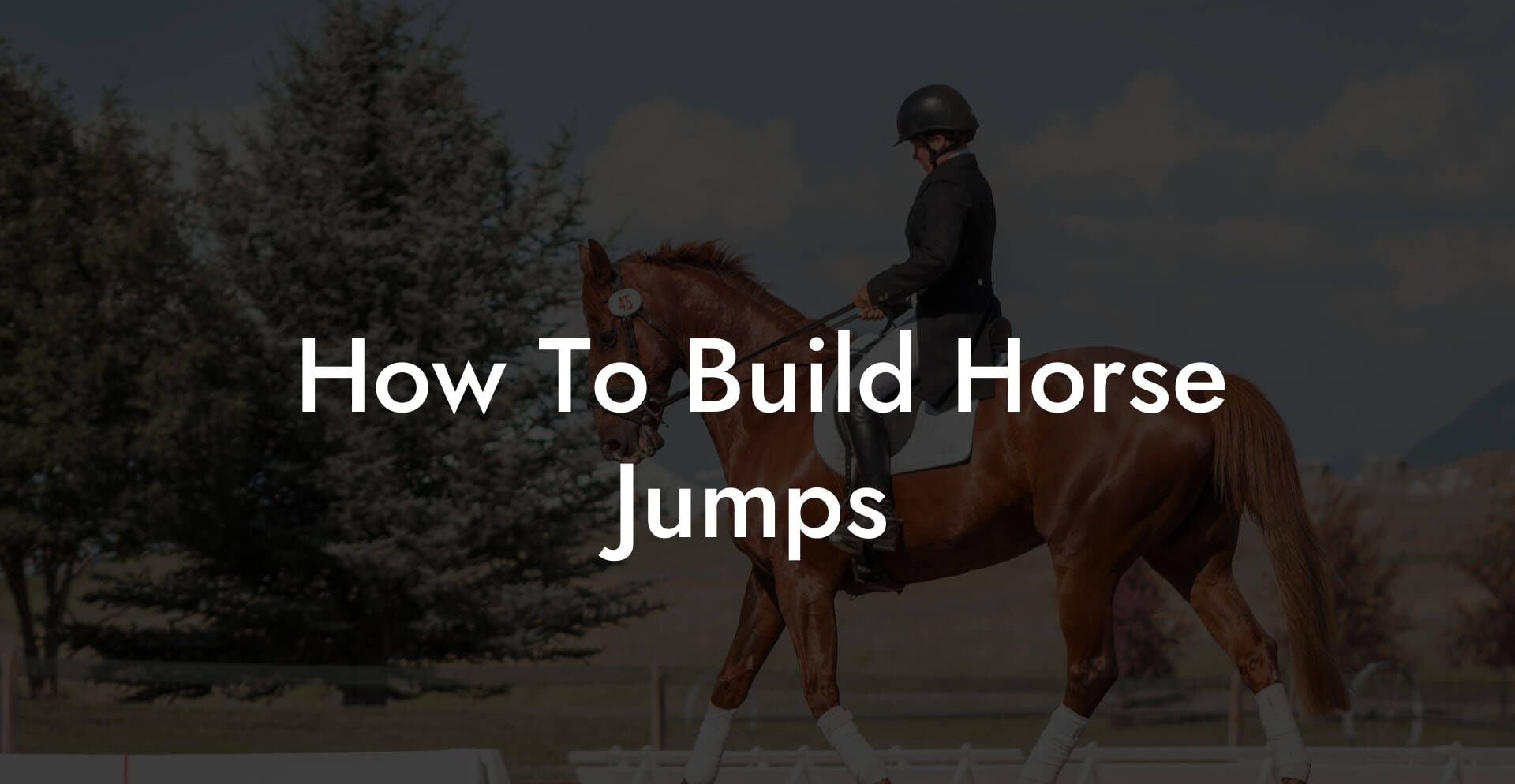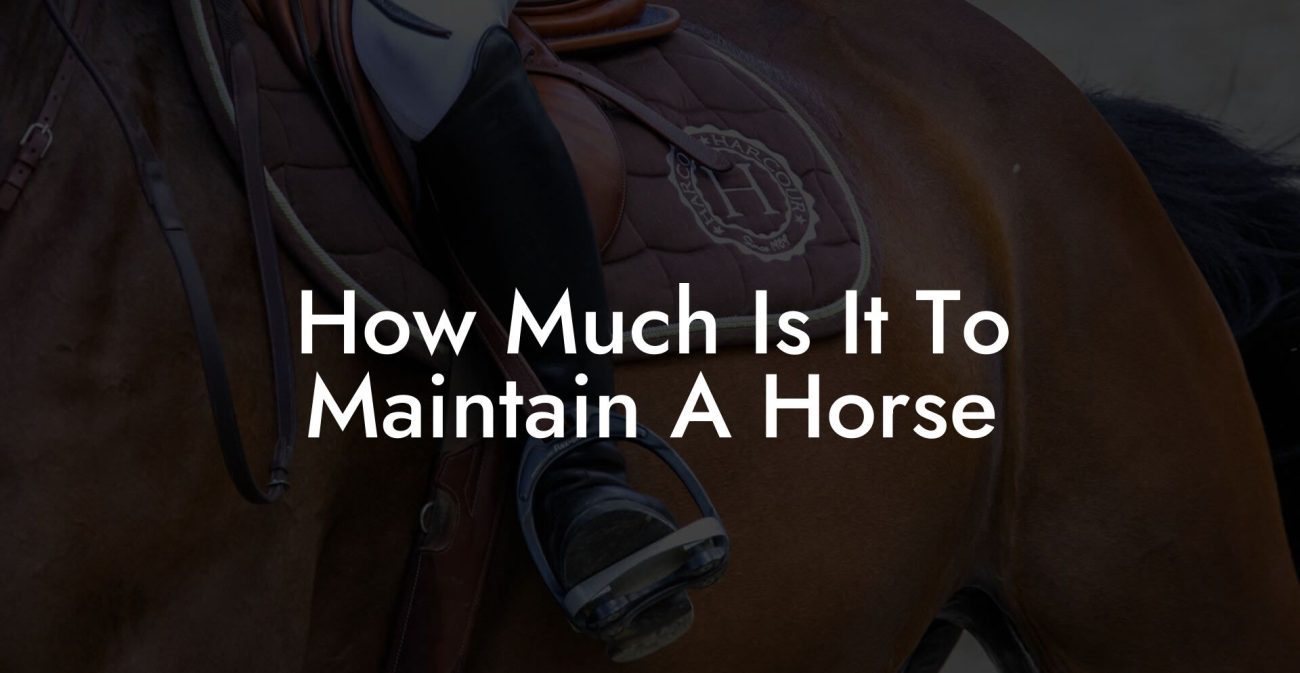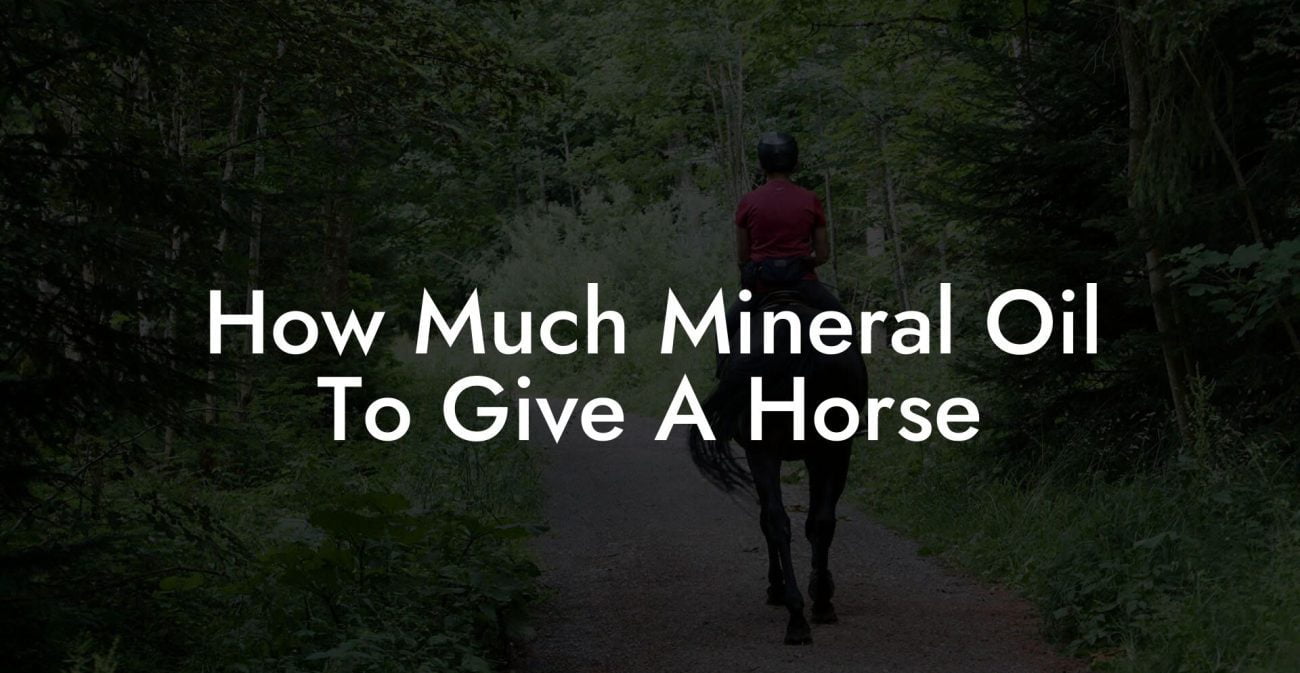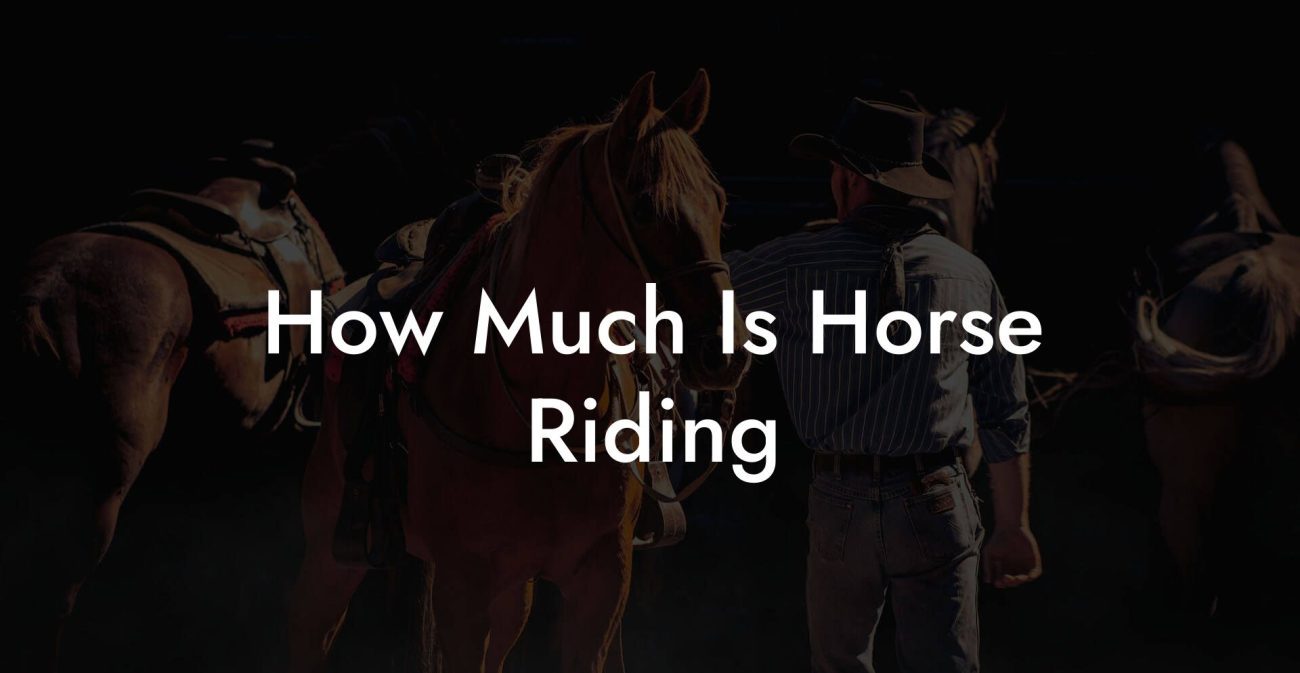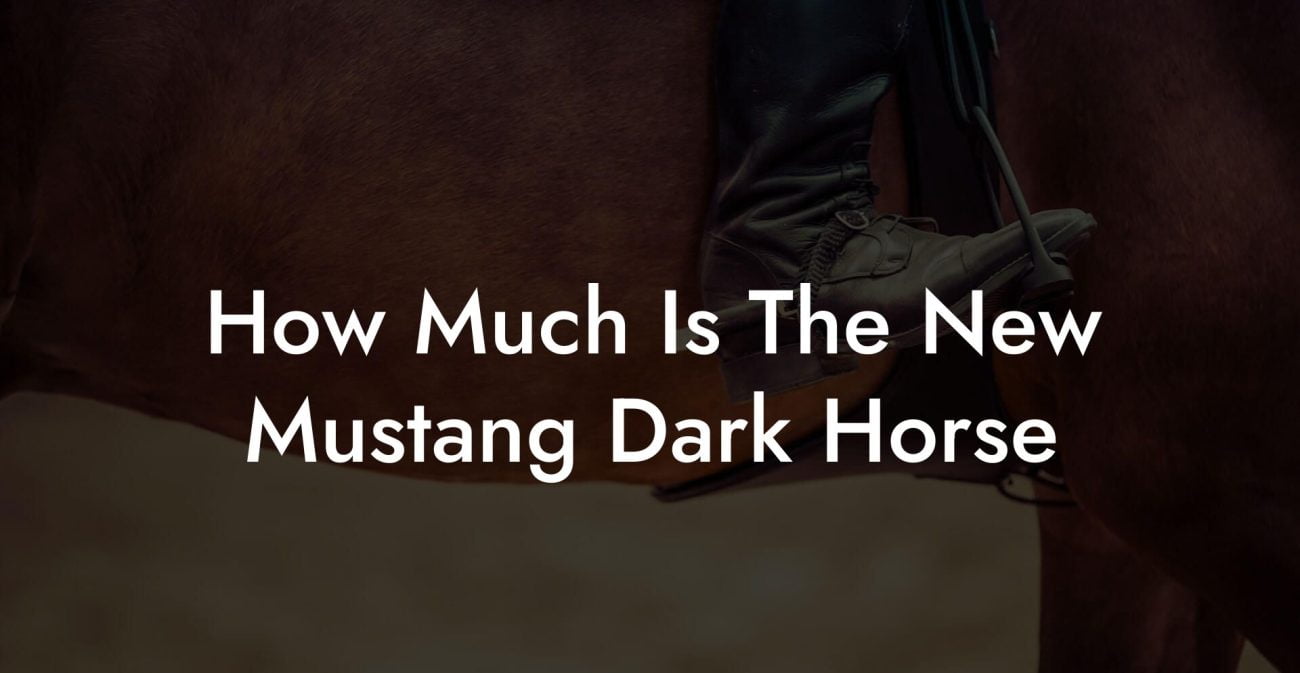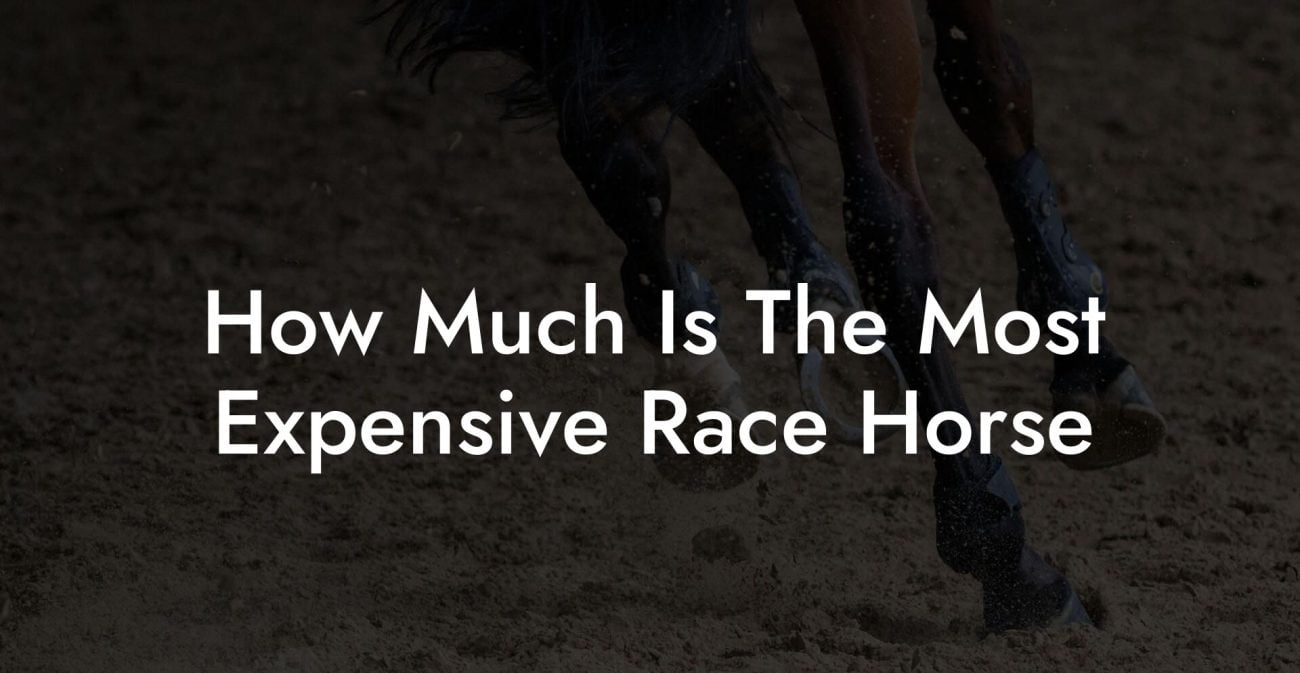Building your very own horse jumps isn’t just a weekend DIY project, it’s a hands-on way to transform your backyard into an exhilarating equestrian playground. Whether you’re a horse enthusiast looking to upgrade your stable’s training range or a Gen-Z rider dreaming of creating that Instagram-worthy obstacle course, constructing custom jumps blends creativity, engineering, and a deep care for your four-legged friends. Let’s break down how to build horse jumps that are safe, durable, and downright cool.
Quick Links to Useful Sections
- The Vision: Why Build Your Own Horse Jumps?
- Planning Your Project: Design Foundations and Safety First
- Identify Your Needs and Goals
- Safety Considerations: Protecting Rider and Equine
- Essential Tools and Materials: Building Blocks for Success
- Materials Checklist
- Tools You Can’t Do Without
- Step-by-Step Construction: From Blueprint to Backyard Masterpiece
- Step 1: Draft Your Blueprint
- Step 2: Prepare the Foundation
- Step 3: Cut, Sand, and Pre-Fit Your Components
- Step 4: Assemble the Framework
- Step 5: Install the Jump Rails or Crossbars
- Step 6: Finishing Touches and Weatherproofing
- Advanced Design Considerations: Customization, Modularity, and Tech Integration
- Modular and Adjustable Designs
- Tech Integration: Smart Sensors and Monitoring
- Eco-Friendly Materials and Sustainable Practices
- Maintaining Your Horse Jumps: Ensuring Longevity and Performance
- Regular Inspections and Safety Checks
- Cleaning and Weatherproofing
- Upgrades and Modifications
- Integrating Your Horse Jumps into Your Daily Equestrian Routine
- Trial Runs and Adjustments
- Creating a Routine That Sticks
- Incorporating Variety and Progressive Challenges
- Resources and Community Support: Your Next Steps
- Real-Life Success Stories: Transforming Spaces and Elevating Equestrian Training
- Case Study: From Basic to Bold
- Case Study: Community-Driven Innovation
- Future Trends in Horse Jump Construction
- DIY Tips and Tricks: Expert Advice for the Modern Equestrian Builder
- FAQ: Everything You Need to Know About Building Horse Jumps
- Your Path to a Custom-Built, Inspiring Equestrian Space
The Vision: Why Build Your Own Horse Jumps?
In the age of Pinterest boards and TikTok hacks, the idea of building your own DIY horse jumps is as appealing as that perfectly filtered snap of your ride leaping gracefully over a custom-built obstacle. Beyond the bucket-list factor, creating your own jumps means you can tailor the design to suit your horse’s training level, your property’s layout, and even the latest sustainable trends. Gone are the days of overpaying for cookie-cutter jumps; your bespoke creation is all about showcasing your passion for equine care and innovation.
Plus, there’s the unspoken joy of knowing that you built something with your own two hands. Whether you’re constructing backyard jumps for a local lesson or crafting a series of progressive obstacles for a small equestrian center, the process is a rewarding blend of art, science, and community. And let’s be honest, nothing says “I care about my horse” quite like investing time and creativity into building a jump that meets their needs and your aesthetic.
Planning Your Project: Design Foundations and Safety First
Just like any mammoth DIY project, building horse jumps starts with a solid plan. You want something that’s not only visually appealing but also safe, durable, and adaptable. Here’s how to get rolling:
Identify Your Needs and Goals
The first step in your design journey is to sit down and brainstorm. Ask yourself: What type of horse jumps are you aiming to build? Are you considering basic cross-rails for beginners, or are you envisioning adjustable, modular jumps for advanced training? Perhaps you even want to incorporate multiple levels of difficulty in a single setup.
Consider the following factors:
- Your Horse’s Training Level: Tailor jump heights and widths to match your horse’s abilities. For young or inexperienced horses, lower and broader jumps reduce the risk of injury during practice.
- Frequency of Use: Are these jumps for daily training within your equine facility, or occasional weekend fun? More frequent use demands higher durability.
- Aesthetic and Functionality: Modern design trends meet classic equestrian practicality. A sleek, minimalist design might include weatherproof materials and adjustable components that look great on social media!
Safety Considerations: Protecting Rider and Equine
Safety isn’t just a checkbox, it’s the foundation of every equestrian training facility. When designing your horse jumps, consider:
- Materials with Impact Resistance: Choose high-quality, weather-resistant materials such as treated lumber, metal brackets, or even recycled plastic composites that won’t splinter or degrade in the elements.
- Stability and Anchoring: Ensure that your jumps are securely anchored into the ground. Use concrete footers or heavy-duty ground anchors to prevent any wobbling during high-intensity training sessions.
- Smooth Edges and Surfaces: To avoid scraping or snagging your horse’s legs, all edges must be rounded or reinforced with protective bumpers. A little padding can go a long way!
Remember, your creation should blend form and function so that both you and your horse can focus on performance without worrying over safety mishaps.
Essential Tools and Materials: Building Blocks for Success
Dive into your hardware store checklist! Crafting sturdy and stylish horse jumps requires a mix of creativity and proper supply management. Here’s your go-to toolkit:
Materials Checklist
- Treated Lumber: Preferably pressure-treated or naturally rot-resistant, ensuring longevity and minimal maintenance.
- Metal Brackets and Fasteners: Galvanized or stainless steel options are ideal for outdoor projects, withstanding weather and heavy loads.
- Concrete and Footers: Essential for anchoring the base of your jumps securely into your terrain.
- Weather-Resistant Paint or Sealant: To preserve the wood’s longevity and keep your jump looking fresh through all seasons.
- Padding or Rubber Bumpers: These create smooth transitions between different parts of the jump, protecting both horse and rider.
- Optional: Recycled Plastic Components: For a modern twist and extra durability, integrating recycled materials is both eco-friendly and trendy.
Tools You Can’t Do Without
- Measuring Tape and Level: Precision is key! Ensure every part of your jump meets engineering standards.
- Power Drill and Driver Kit: Fasten everything securely and effortlessly with cordless tools.
- Saw (Circular or Miter): Cut your materials into the perfect size and shape.
- Wrench Set: Tighten bolts and brackets, ensuring that there’s no wobbly business.
- Protective Gear: From gloves to goggles, safety never goes out of style.
With the right tools and materials, you’re one step closer to turning your vision into a sturdy, functional display of equine care.
Step-by-Step Construction: From Blueprint to Backyard Masterpiece
Here’s the fun part, bringing your dream jump to life! Follow these steps to build a jump that’s both safe and stylish.
Step 1: Draft Your Blueprint
Start by sketching your design on paper or using design software. Map out all the dimensions, angles, and attachment points. This blueprint will serve not only as your guideline during construction but also as a document to tweak your design based on your horse’s progress.
Pro tip: Use online design tools or even hand-drawn sketches on graph paper. Clarity at this stage saves a ton of frustration later!
Step 2: Prepare the Foundation
A solid base won’t just look great, it’ll keep your jump safe and secure. Excavate the areas where the jump legs will be installed, then pour concrete footers if necessary. Allow adequate curing time before you mount anything.
Don’t skip this crucial step. A well-laid foundation is like a great pair of sneakers for a marathon, it supports every stride!
Step 3: Cut, Sand, and Pre-Fit Your Components
Cut the lumber and other structural components to the required dimensions. Sand the edges to create smooth surfaces, reducing the risk of splinters that could injure your horse. Pre-fit all pieces before permanently attaching them, ensuring a snug fit.
This is your “get-to-know-your-materials” stage. Experiment with the layout and make sure every piece aligns perfectly.
Step 4: Assemble the Framework
Begin by erecting the main support structure. Using your level and measuring tape, verify that every piece is plumb and square. Secure the joints with metal brackets, driven by long-lasting bolts or screws. Allow yourself to get in the groove, this is where precision meets creativity!
If you’re building adjustable jumps, install the necessary brackets or sliding mechanisms at this point. This gives you the flexibility to tweak the height and width as needed.
Step 5: Install the Jump Rails or Crossbars
The rails are the heart of your jump, these must be firmly attached to the framework, with an option for easy replacement if wear and tear set in due to frequent use. Use padded or custom-designed rails to enhance safety.
Consider integrating modular crossbars that can be rearranged or swapped out to create varied challenges. This approach not only enhances training versatility but also keeps your design fresh and exciting.
Step 6: Finishing Touches and Weatherproofing
Once your structure is built, cover all exposed wood with a weather-resistant paint or sealant. This step prolongs the life of your jump, making sure it stays robust against rain, sun, and seasonal fluctuations.
Add rubber bumpers or protective pads to all contact points, this extra cushion of safety is vital for your horse’s joints and your own peace of mind.
And don't forget the aesthetics: a fresh coat of paint in your favorite color or a design that reflects your personality can transform a mere obstacle into a piece of backyard art.
Advanced Design Considerations: Customization, Modularity, and Tech Integration
Once you’re confident in your basic build, why not explore advanced techniques to elevate your horse jumps? Today’s equestrians are all about adaptability and technology. Here are a few ideas to consider:
Modular and Adjustable Designs
The modern rider values versatility, build your jumps with modular components that can easily adapt to different training sessions. Adjustable heights and interchangeable crossbars help you create a dynamic, multi-use training ground without breaking the bank.
Invest in a design that allows you to reposition parts quickly with minimal tools. This way, you can effortlessly shift from low jumps for beginners to more challenging setups as your horse’s skills improve.
Tech Integration: Smart Sensors and Monitoring
For the tech-savvy rider, incorporating sensors into your jumps isn’t far-fetched. Imagine integrating pressure sensors on the landing areas to monitor impact or even using a connected app that records jump performance. This real-time feedback can help fine-tune your training regimen and keep injury risks at bay.
While this might seem high-tech, several simple gadgets on the market can be adapted for both safety and performance tracking, merging classical craftsmanship with modern innovation.
Eco-Friendly Materials and Sustainable Practices
Sustainability matters, so why not use recycled materials or eco-friendly composites in your build? Sustainable choices like reclaimed wood or recycled plastics not only reduce your carbon footprint but also offer a unique, one-of-a-kind look to your equestrian setup.
Highlight the eco-friendly aspect of your project on social media to inspire other riders and construction enthusiasts, after all, caring for your horse also means caring for the planet they roam.
Maintaining Your Horse Jumps: Ensuring Longevity and Performance
Building the perfect horse jumps is only the start, the ongoing maintenance of your equipment is just as critical. A few simple steps can extend the life of your obstacles and ensure they continue to provide safe, effective training for your equine partner.
Regular Inspections and Safety Checks
Schedule routine inspections to check for loose bolts, wood rot, and surface wear. Look for signs of weather damage, such as fading paint or cracked seals, and perform touch-ups as needed. A quick weekly or monthly survey of your jumps can prevent costly repairs down the line.
Use your smartphone to snap photos of any areas of concern and share them with fellow equestrians online for a second opinion, crowdsourcing advice is a genius move in this digital age!
Cleaning and Weatherproofing
Keeping your jumps clean is crucial for both aesthetics and function. After a rainy day or seasonal storms, wash down wooden parts with a mild solution of water and environmentally friendly cleaner, then reapply a sealant if necessary.
Don’t forget the metal components; check for rust spots and clean them with a rust remover, ensuring your jump stays as striking as the day you built it.
Upgrades and Modifications
As your horse evolves in skill and your riding style adapts, consider upgrading your jumps. Replacing worn-out parts, adding new safety features, or even reconfiguring the layout to introduce new challenges are excellent ways to keep the training sessions fresh and exciting.
Engage with online communities or local equestrian groups to exchange tips on modifications, sharing knowledge is part of the fun!
Integrating Your Horse Jumps into Your Daily Equestrian Routine
Now that you’ve built a robust, flexible horse jump system, how do you seamlessly incorporate it into your day-to-day routine? The essence lies in making the training process as enjoyable and effective as possible for both you and your horse.
Trial Runs and Adjustments
Before declaring your jumps fully operational, run a series of trial sessions. Allow your horse to get familiarized with the new obstacles at a slower pace, gradually increasing the challenge. Watch for any hesitations or signs of discomfort, adjust the height or angle of the jumps accordingly.
Creating a Routine That Sticks
Consistency is key in equestrian training. Set aside dedicated time slots, whether early mornings or sunsets, to work on jump exercises. Use digital calendars or even equestrian training apps to remind you of your schedule. Soon enough, the jumps will become a natural part of your routine, just like prepping your favorite oat mix.
Incorporating Variety and Progressive Challenges
Don’t let training become monotonous. Mix up the sessions by rearranging the jumps or introducing timed challenges. This not only boosts your horse’s agility and confidence but also keeps them mentally engaged, turning every workout into an adventure.
Whether you’re a competitive rider or just building fun routines in your backyard, these creative variations add an element of surprise to your training sessions.
Resources and Community Support: Your Next Steps
One of the best parts of embarking on a DIY project like this is the vibrant community that comes with it. There are countless resources available online, from detailed video tutorials on YouTube to dedicated equestrian forums where riders swap tips on building and maintaining horse jumps.
Join social media groups on Facebook, Reddit, and Instagram where fellow DIY enthusiasts share their experiences, before-and-after photos, and even troubleshooting advice. Attending local equestrian expos or community events can not only inspire new design ideas but also offer hands-on workshops that could refine your building skills.
Additionally, check out equipment suppliers that offer bulk discounts or sustainable materials specifically for equestrian projects. A little bit of research can lead you to hidden gems in terms of both resources and community support, turning your building project into a networking opportunity that enriches your passion for horse care.
Real-Life Success Stories: Transforming Spaces and Elevating Equestrian Training
Nothing speaks louder than a success story. Across the country, riders and stable managers have taken matters into their own hands by building custom horse jumps that not only enhance training sessions but also transform their riding arenas into hubs of creativity and innovation.
Case Study: From Basic to Bold
Take the story of Jamie, a young, dynamic rider from the Midwest, who turned a bland, cracked training arena into a vibrant equestrian hotspot. Armed with a modest budget and towering ambition, Jamie meticulously designed jumps that could be adjusted on-the-fly. Starting with a simple blueprint, they built an array of jumps using reclaimed wood and eco-friendly composites. The result? Not only did the custom jumps boost training performance dramatically, but they also became a local sensation on social media. Fellow riders, impressed by Jamie’s ingenuity, began sharing ideas and collaborating on further modifications.
Case Study: Community-Driven Innovation
In another inspiring tale, a group of enthusiastic riders in a small rural community pooled together their resources to create a modular jump system that could handle varying levels of competition. The project was a community affair, from brainstorming sessions to building days, everyone had a role. The success of this initiative led to regular riding contests and training clinics that not only improved the skills of local horses but also fostered a strong sense of community among riders. Their project shows that with teamwork and creativity, a simple idea can elevate the entire equestrian experience.
These stories underscore an important truth: building your own horse jumps isn’t just a project; it’s a journey that connects you to a community of like-minded individuals who share your passion for horses and innovation.
Future Trends in Horse Jump Construction
The world of equestrian sports is continuously evolving, and DIY horse jump construction is no exception. Future trends include an increased focus on smart technology, eco-friendly building practices, and designs that can adapt to the ever-changing needs of riders and horses.
Expect to see modular systems that integrate digital feedback, providing real-time adjustments for training efficiency. There’s also a growing trend towards sustainable materials, where builders opt for reclaimed wood and recycled composites, marrying environmental consciousness with durable performance.
Embrace these trends and consider how your next project might incorporate technological integrations, smart sensors, adjustable settings, and even augmented reality (AR) design aids to plan your next innovation.
DIY Tips and Tricks: Expert Advice for the Modern Equestrian Builder
No tutorial would be complete without a handful of pro tips to ensure your project runs as smoothly as your horse’s gallop. Here are some nuggets of wisdom gathered from experienced DIY builders and seasoned equestrians:
- Plan for Flexibility: Design your jumps with future modifications in mind. A modular design can adapt to both your horse’s growth and new training techniques.
- Invest in Quality Tools: Reliable power tools and high-quality fasteners make all the difference. Don’t cut corners here, precision in the build stage pays dividends later.
- Be Safety-Obsessed: Always double-check your work, especially when it comes to anchoring and stability. A small miscalculation can lead to big safety issues down the road.
- Document Your Process: Take before-and-after photos, and keep detailed notes on measurements, materials, and modifications. This documentation not only helps with future projects but may inspire fellow riders online.
- Learn and Adapt: The world of DIY is constantly evolving. Stay updated with the latest trends in equestrian construction, join online forums, and seek advice from experienced builders.
A little extra effort at the plan stage can transform your jump-building project from a simple structure into an engineering masterpiece, all while keeping your horse’s best interests at heart.
FAQ: Everything You Need to Know About Building Horse Jumps
Below are some frequently asked questions that riders, stable managers, and DIY enthusiasts often have when it comes to constructing horse jumps. Whether you’re curious about materials, design tweaks, or safety measures, these FAQs have got you covered.
1. What are the best materials for building durable horse jumps?
High-quality treated lumber, galvanized metal brackets, and recycled composite materials are excellent choices. These materials ensure that your jumps withstand weather, wear, and the daily impacts of energy-packed training sessions.
2. How do I determine the correct height and spacing for my horse jumps?
Begin with your horse’s current training level. For beginners or younger horses, lower and wider jumps are safer. Consulting with an equine trainer to get personalized recommendations based on your horse’s build and skill is also a wise move.
3. Can I build adjustable jumps that grow with my horse’s skills?
Absolutely! Many modern designs incorporate modular and adjustable components, allowing you to tweak the height and spacing as needed, ensuring that your horse’s training remains both challenging and safe.
4. How do I ensure that my DIY horse jumps are safe?
Safety begins with a solid foundation. Make sure your jumps are securely anchored, use weatherproof and durable materials, and regularly inspect for wear and tear, especially around high-stress areas.
5. What tools are essential for this project?
Some must-have tools include a measuring tape and level, power drill, saw for cutting materials, and protective gear. These ensure precision during build and safeguard your well-being during the process.
6. How do modular designs benefit both the builder and the rider?
Modular designs allow for adaptability, tailor your jump configuration for different training sessions, adjust for your horse’s growth, and easily replace worn components for long-lasting use.
7. Where can I find inspiration and resources for my DIY project?
Online forums, YouTube tutorials, equestrian blogs, and local riding clubs are excellent sources of inspiration and advice. Community support is invaluable for troubleshooting and creative ideas.
Your Path to a Custom-Built, Inspiring Equestrian Space
The journey from concept to completion when building your own horse jumps is as exhilarating as it is rewarding. You’ve envisioned a space where design meets functionality, where every jump serves as a testament to your dedication to your horse’s care, and where creativity transforms into practical, safe equestrian obstacles.
With the step-by-step guidelines, material insights, and design tips outlined throughout this guide, you’re now equipped to embark on a project that not only enhances your horse’s training experience but also reflects your personal style and modern, sustainable values. The blend of cutting-edge tech integrations, eco-friendly materials, and practical construction techniques sets your build apart as an innovation hub for both riders and DIY aficionados alike.
Remember, your custom-built jumps are more than just a training tool, they’re a centerpiece of your equestrian passion and a creative extension of your lifestyle. From trial runs to community showcases, every moment spent refining your jumps adds to the legacy of what you’re building: a safe, inspiring, and ultra-modern training arena that’s as unique as you and your horse.
So, roll up your sleeves and gear up for the adventure ahead. Your custom-built, Instagram-worthy horse jumps are just a project away. Dive in, experiment boldly, and let your passion for equine care and modern design shine.

